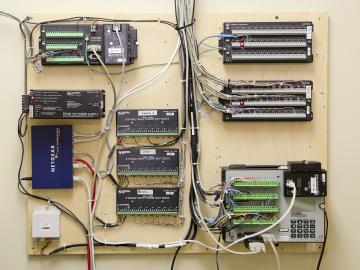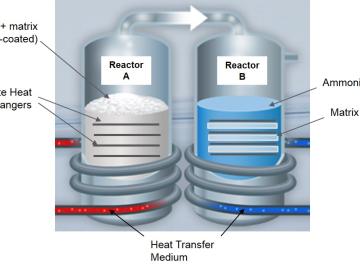
Filter News
Area of Research
News Topics
Media Contacts

A modeling analysis led by ORNL gives the first detailed look at how geothermal energy can relieve the electric power system and reduce carbon emissions if widely implemented across the United States within the next few decades.

ORNL researchers demonstrated that an additive made from polymers and electrolytes improves the thermal performance and stability of salt hydrate phase change materials, or PCMs, a finding that could advance their integration into carbon-reducing heat pumps.

The common sounds in the background of daily life – like a refrigerator’s hum, an air conditioner’s whoosh and a heat pump’s buzz – often go unnoticed. These noises, however, are the heartbeat of a healthy building and integral for comfort and convenience.

Ways to give homeowners more centralized control over how much electricity their home uses—from the air conditioning unit to the heat pump water heater—are being developed by Oak Ridge National Laboratory. An ORNL team is working with Southern Company and Alabama Power on its Sma...

As a boy growing up in China, Xiaobing Liu knew all about Oak Ridge and the World War II Manhattan Project. He had no idea that he would one day work at DOE’s Oak Ridge National Laboratory, the Secret City’s successor. Liu is a lead researcher in geothermal heat pump (GHP) techn...

Salt and ammonia are key ingredients of a high-efficiency natural gas-fired heat pump system being developed by researchers at Oak Ridge National Laboratory, Rheem and ClimateWell. Potentially, the SaltX system could provide 43 percent greater efficiency than today’s best furn...

Clothes dryers that use thermoelectric heat pump technology being developed by Oak Ridge National Laboratory and industry partner Sheetak could use 40 percent less energy, potentially saving consumers $3 billion in utility costs. “Each month, electric clothes dryers typically consume more energy than any other household appliance,” said Kyle Gluesenkamp, who leads the development team for ORNL’s Building Equipment Research Group.

People in cold climates who heat with electricity could realize savings of up to 70 percent with a new heat pump developed by Oak Ridge National Laboratory and Emerson Climate Technologies. The tandem compressor system, developed through a cooperative research and development ag...


A ground source heat pump installed at rural Cedarville High School in Arkansas through the American Recovery and Reinvestment Act has reduced energy use by 53 percent and carbon dioxide emissions by 52 percent, according to an Oak Ridge National Laboratory report. ORNL researchers X...


